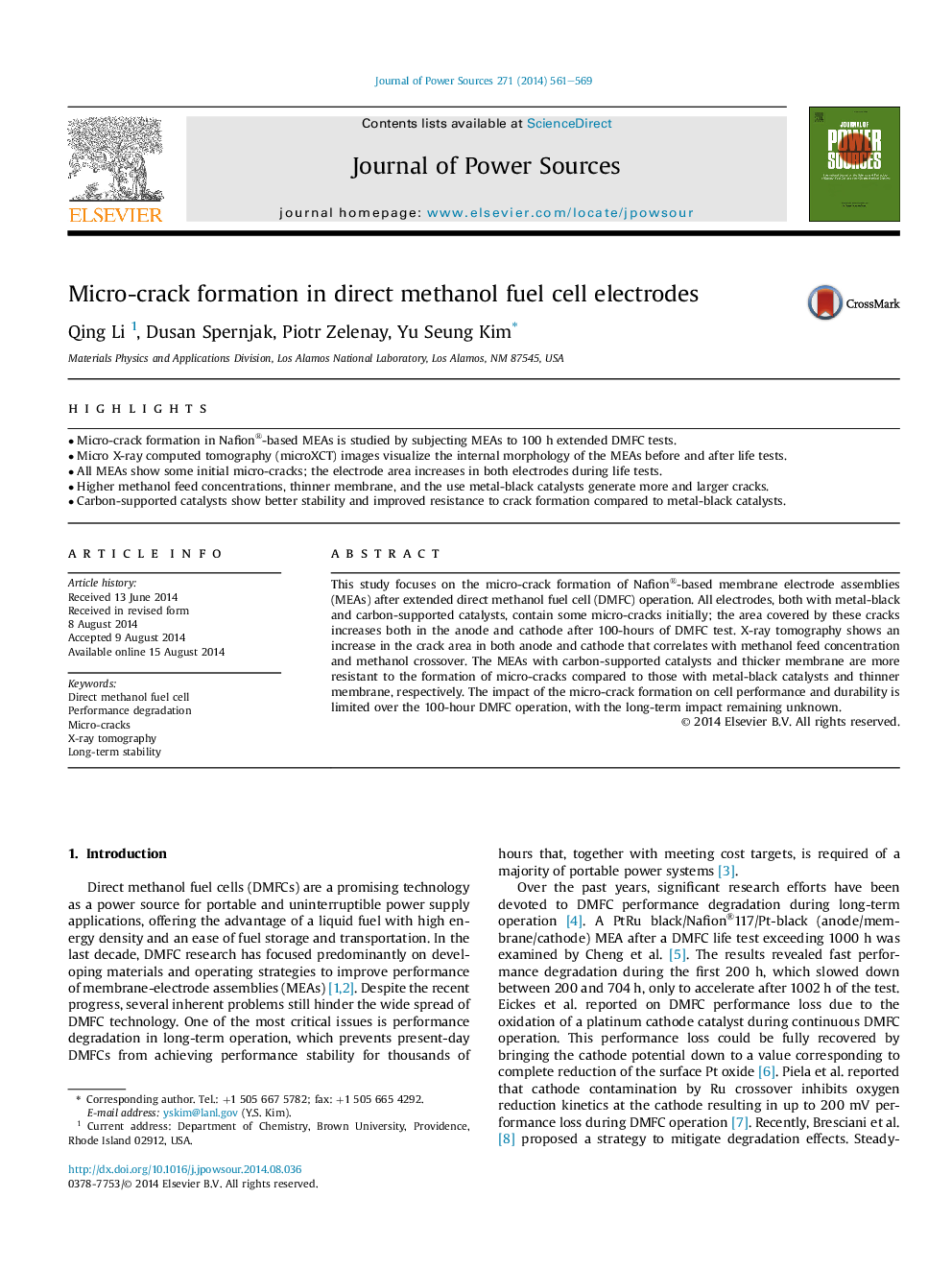| Article ID | Journal | Published Year | Pages | File Type |
|---|---|---|---|---|
| 7735483 | Journal of Power Sources | 2014 | 9 Pages |
Abstract
This study focuses on the micro-crack formation of Nafion®-based membrane electrode assemblies (MEAs) after extended direct methanol fuel cell (DMFC) operation. All electrodes, both with metal-black and carbon-supported catalysts, contain some micro-cracks initially; the area covered by these cracks increases both in the anode and cathode after 100-hours of DMFC test. X-ray tomography shows an increase in the crack area in both anode and cathode that correlates with methanol feed concentration and methanol crossover. The MEAs with carbon-supported catalysts and thicker membrane are more resistant to the formation of micro-cracks compared to those with metal-black catalysts and thinner membrane, respectively. The impact of the micro-crack formation on cell performance and durability is limited over the 100-hour DMFC operation, with the long-term impact remaining unknown.
Keywords
Related Topics
Physical Sciences and Engineering
Chemistry
Electrochemistry
Authors
Qing Li, Dusan Spernjak, Piotr Zelenay, Yu Seung Kim,
